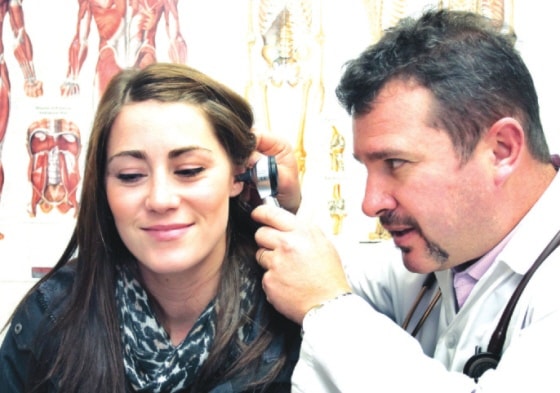Some Ponoka doctors have taken care of several generations of residents; they have been there through every broken bone and new baby delivered.
To celebrate the work of family doctors, the College of Family Physicians of Canada (CFPC) celebrated the ninth annual Family Doctor Week Nov. 12 to 17 to show appreciation of the role doctors’ play in a family’s life.
Dr. Izak van der Westhuizen says the work for a family physician is extensive and can cover acute care, home care, surgery and other areas. In a small town such as Ponoka their jobs increase. “Your scope of practice will be more extensive.”
He feels one of the benefits living in a small community is knowing residents and having a quiet place to live. “It’s a great place to raise your family.”
The doctor/patient relationship is complex, he explained, and often has a psychological component doctors must be aware of. The benefits of the relationship are strong though, especially if the client realizes their doctor is there to help.
“It’s beneficial to us and the patient if they tell us as much as they can,” said van der Westhuizen.
The more they know about a situation, the better they can help a patient, Van der Westhuizen has been a doctor since 1994.
“The biggest thing is to see you can diagnose people early in a disease… and be able to treat people.”
What keeps him going is people’s gratitude when he has been able to help them. “That’s what keeps us going.”
One of the challenges he sees for Ponoka doctors as a group is the commitment to 24/7 care, which means covering the emergency room on nights and weekends. He does feel though there are plans in the works to increase the number of doctors in the province.
With the current doctor shortage faced not only in Ponoka but in Alberta, Coun. Rick Bonnett, town representative to the Ponoka Physician Attraction and Retention Committee, said they focus on the community aspect when attracting a doctor. The goal is to show Ponoka as a welcoming environment for the entire family.
Despite only one doctor considering a move to Ponoka last year, the group works closely with the Rural Physician Action Plan (RPAP) in case there is a doctor touring a specific area. When moving to Alberta a doctor usually has a specific area they would like to live in so RPAP will give them three or four towns as options, which is when they contact the committee.
Bonnett has heard of other communities offering a financial incentive to relocate to their community but for Ponoka that is not possible.
“Unfortunately we don’t have the budget to do that,” said Bonnett.
He does feel Ponoka is close to an ideal doctor-to-patient ratio. “We’re only one or two doctors from being in good shape…at least if we keep trying at least there’s some hope.”
There are four guiding principles for the CFPC; the family physician is a clinician and understand the needs of their clients; family medicine is a community-based discipline and can adapt to the changing needs of their clients, they can deal with ambiguity and uncertainty; the family physician is a resource to a defined practice population, which means they maintain their patients’ health whether they visit the office and provide effective care; the patient physician relationship is central to the role of the family physician, they respect the privacy of a patient and appreciate the human condition, especially in suffering and how a patient responds to sickness.
Detailed information on the four principles can be found at www.cfpc.ca/.
Facts on Alberta’s doctors
A press release from the Canadian Institute of Health Information on Nov. 15 shows growth in the number of physicians in Alberta since 2001.
• There were 5,154 physicians in 2001 with 8,258 in 2011 a 60-per-cent increase.
• Family physicians grew by 56.8 per cent in that time compared to the 24.1 per cent Canadian rate.
• Between 2010 and 2011 there was an increase of 376 physicians.
